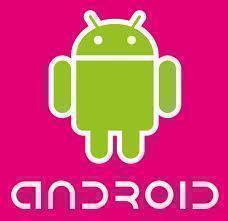What is Android?
Android is an operating system that Google developed and owns, which runs on smartphones and tablet computers. Known as a leading operating system in today’s mobile device market, Canalys listed Android as the best selling smartphone platform worldwide in Q4 2010.
Endeavoring to create a truly open mobile platform, Google works with many other companies under the umbrella of the Open Handset Alliance. Some other participating companies include T-Mobile, Intel, HTC, Qualcomm, and Motorola. The participation of several leading companies in the mobile phone industry has meant that Android is available in many different devices, carriers, and platforms. The carriers that use Android include LG, Samsung, Sony Ericsson, Acer Inc., and all of the ones already mentioned.
Open Source Availability
Android is an open source operating system. Google released most of the code in 2007 under the Apache License when the operating system was unveiled. Built on a Linux kernel, Android consists of middleware, APIs, and libraries written in C code. Android uses an application framework that runs compiled Java code through the Dalvik virtual machine.
The Android Market
Because of its open source availability, Android has a large community of developers that contribute to its application market. Many apps extend the functionality of the device in ways that are not possible on other mobile device operating systems such as iOS.
Any developer can submit an application to Android market for publishing and as of December 2010 there were about 200,000 apps available. The Android Market application program sorts the available apps on each device by different compatibility standards. App developers are allowed to make their apps exclusive to particular cell phone carriers or countries based on business reasons.
Google has also contributed some apps to the Android Market, including Google Voice, Sky Map, Finance, Maps Editor, Places Directory, Google Goggles, Gesture Search, My Tracks, and Google Translate.
Installing Third Party Apps
Any user can create an app and install it on his/her Android OS. Private developers frequently offer apps that are not available through Android Market, either because they do not wish to make them available or they do not fit Google’s mobile compatibility standards.
Amazon has recently developed Amazon Appstore, which is expected to foster growth for its own tablet computer and take a leading place in the distribution of Android Apps.
Versions of Android
Android has gone through several updates and revisions, the most recent of which is Android 3.x.x, also known as Honeycomb. The following versions have been released in Android’s history:
- Android 1.1 — February 2009
- This version included support for saving attachments in MMS, marquee in layouts, and several API changes
- Android 1.5 (Cupcake) — April 2009
- Notable additions include Bluetooth A2DP support and AVRCP support.
- Android 1.6 (Donut) — September 2009
- Notable additions include WVGA screen resolution support and Google free turn by turn support
- Android 2.0/1 (Eclair) — October 2009
- Notable additions include HTML5 file support, Microsoft exchange server, and Bluetooth 2.1 support
- Android 2.2 (Froyo) — May 2010
- USB tethering and Wi-Fi hotspot functionality was added as well as Adobe Flash 10.1 capability
- Android 2.3 (Gingerbread) — December 2010
- Support for larger screen sizes and resolutions and multi-touch software keyboard support were added
- Android 3.x.x (Honeycomb) — May 2011
- A major revision, this update included optimized tablet support, a revamped user interface, support for 3d desktops through OpenGL libraries, and video chat and GTalk support.


Comments - No Responses to “What is Android?”
Sorry but comments are closed at this time.